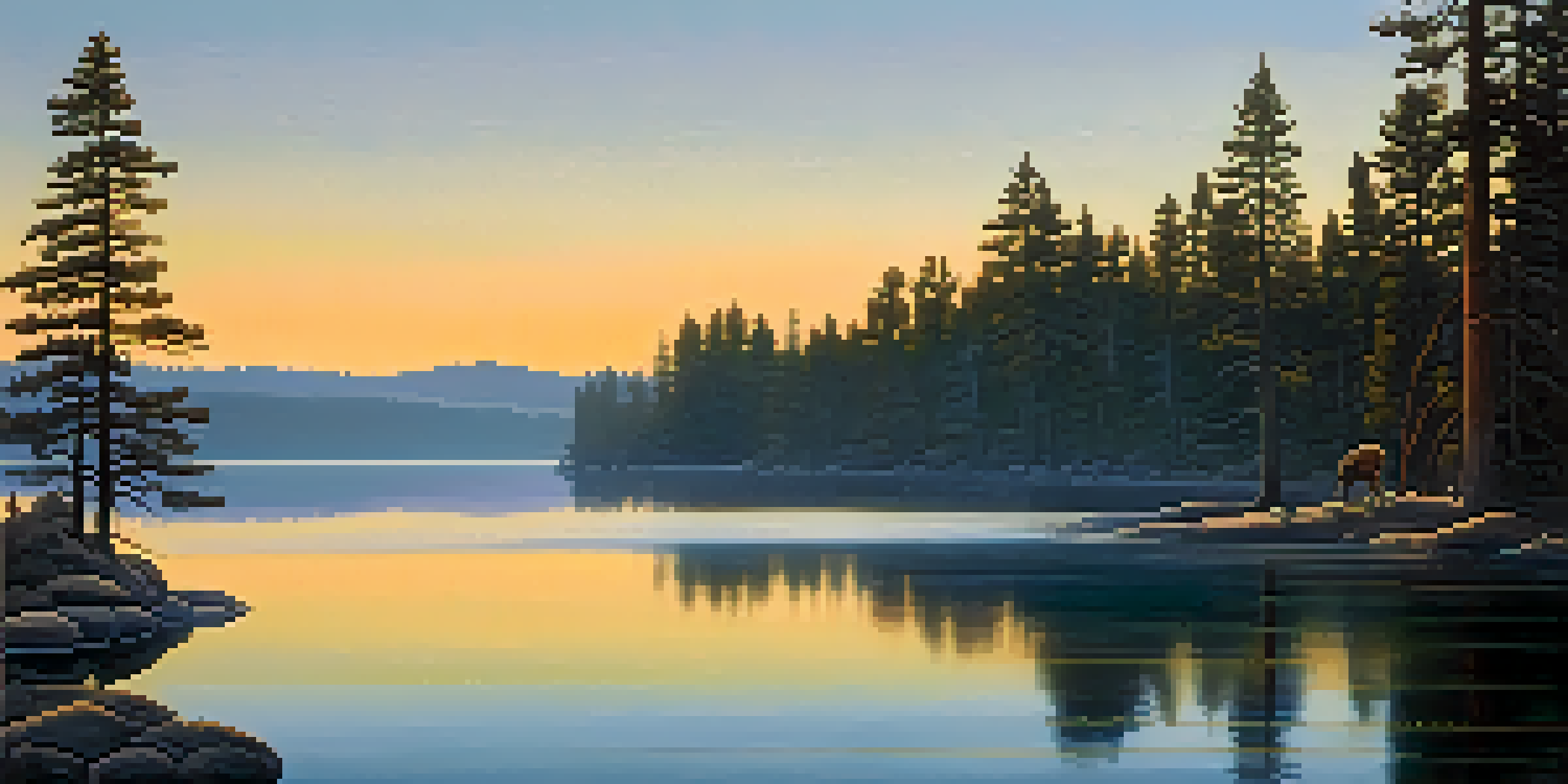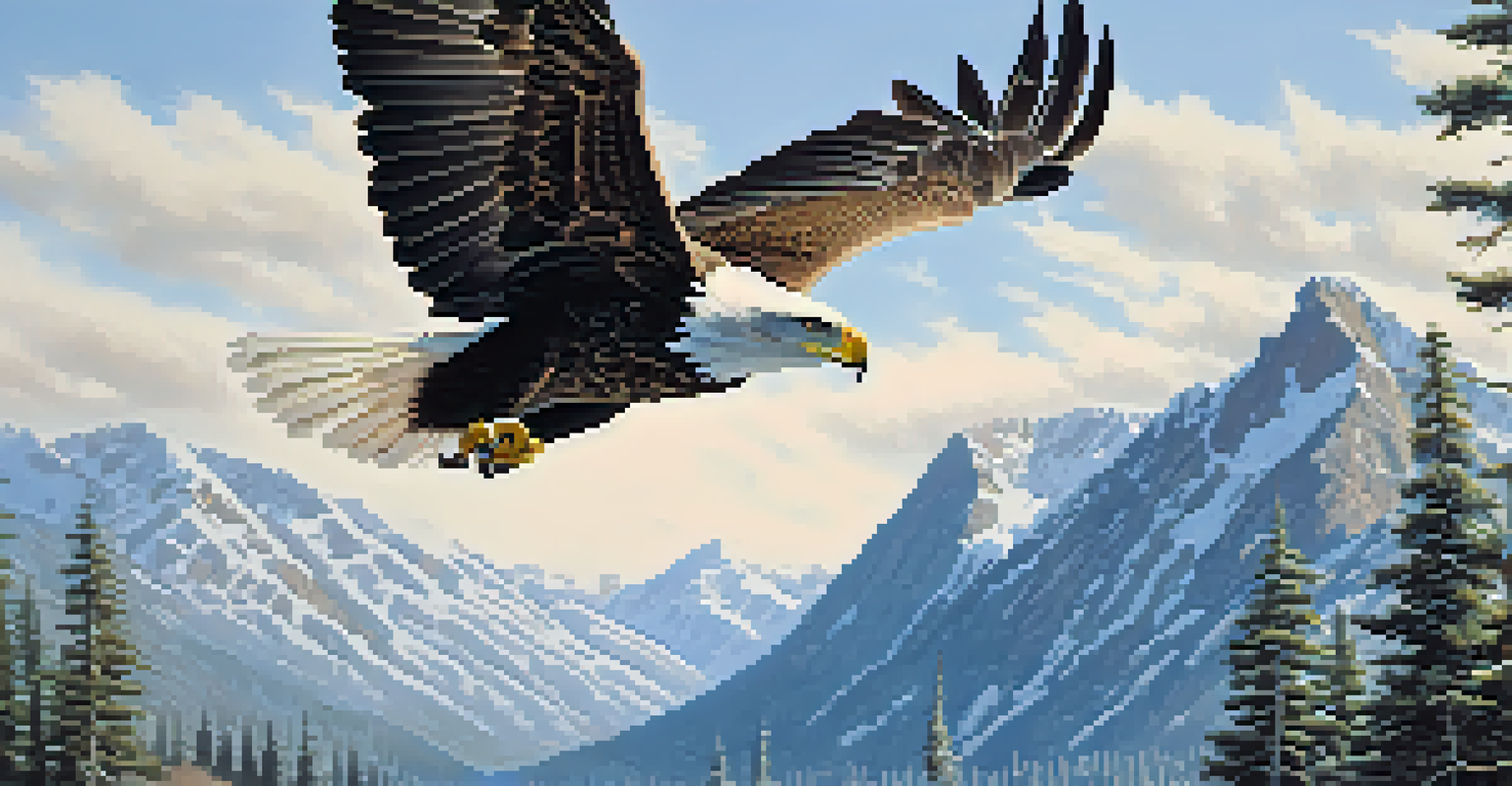Wildlife Photography Tips for Big Bear Tour Participants

Understanding Your Equipment: Basics of Wildlife Photography
Before you head out on your Big Bear adventure, familiarize yourself with your camera. Whether you’re using a DSLR, mirrorless, or even a smartphone, knowing how to adjust settings like aperture, shutter speed, and ISO can make a huge difference in your photos.
In wildlife photography, the most important thing is to be patient and observant.
A good zoom lens is essential for wildlife photography. It allows you to capture animals from a distance without disturbing them. If you're using a smartphone, consider a clip-on lens to enhance your zoom capabilities.
Remember to check your battery and memory card before you leave. Nothing is more frustrating than missing the perfect shot because of a dead battery or full card. Preparation is key for a successful photography outing.
Timing is Everything: Best Times for Wildlife Photography
Wildlife is often most active during dawn and dusk, known as the golden hours. The soft, warm light during these times not only makes for great photos but also increases your chances of spotting animals as they forage for food.

Midday can be challenging for photography since the harsh sunlight can create unflattering shadows and overexposed highlights. If you find yourself out during this time, look for shaded areas or wait for the golden hour to resume shooting.
Know Your Camera Settings
Familiarizing yourself with camera settings like aperture, shutter speed, and ISO is crucial for capturing stunning wildlife photos.
Additionally, consider seasonal variations; certain animals may be more active during specific times of the year. Researching the wildlife patterns in Big Bear can help you plan your photography sessions effectively.
Observation Skills: Patience Pays Off in Wildlife Photography
One of the most important skills in wildlife photography is observation. Spend time quietly watching your surroundings, and you may be surprised at what you see. Patience is essential; sometimes, you need to wait for the right moment to capture that perfect shot.
The best time to photograph wildlife is when you least expect it.
Try to blend into the environment. Wear neutral colors and minimize movement to avoid startling the wildlife. The more natural you appear, the more likely animals will go about their activities, allowing you to capture them in action.
In addition, learn about the animals you hope to photograph. Understanding their behavior can help you anticipate their movements and increase your chances of getting that stunning shot.
Framing the Shot: Composing Stunning Wildlife Photos
Composition is crucial in photography, and wildlife images are no exception. Use the rule of thirds to create a balanced and engaging shot. Imagine your frame divided into nine equal parts, and place your subject along those lines or at their intersections.
Additionally, consider the background of your shot. A cluttered background can distract from your subject. Look for open spaces or natural frames, such as branches or foliage, to enhance your image's overall appeal.
Observe Wildlife Behavior
Patience and keen observation skills can significantly enhance your chances of capturing the perfect wildlife shot.
Don't hesitate to experiment with different angles and perspectives. Shooting from below or above can create a unique viewpoint, making your wildlife photos stand out.
Capturing Movement: Techniques for Dynamic Wildlife Photography
Wildlife is often on the move, and capturing that action can lead to breathtaking images. Use a faster shutter speed to freeze motion, which is especially important when photographing fast animals like birds or deer.
However, if you want to convey movement, try a slower shutter speed to create a motion blur. Panning with the animal while shooting can help maintain focus on the subject while blurring the background.
Practice makes perfect! Experimenting with different techniques will help you understand how to capture action shots more effectively.
Ethics of Wildlife Photography: Respecting Nature and Animals
As a wildlife photographer, it’s crucial to respect the animals and their habitats. Always maintain a safe distance and avoid disturbing the wildlife, as stress can have negative effects on their health and behavior.
Additionally, adhere to local guidelines and regulations regarding wildlife photography. Many parks, including those in Big Bear, have specific rules to protect the environment and its inhabitants.
Practice Ethical Photography
Respecting wildlife and their habitats while adhering to local guidelines ensures both the safety of animals and the integrity of your photography.
Remember, the goal is to capture the beauty of wildlife while ensuring their safety and well-being. Ethical photography enhances your experience and contributes positively to conservation efforts.
Post-Processing: Enhancing Your Wildlife Photos
Once you’ve captured your wildlife images, post-processing can help bring out their full potential. Basic edits like cropping, adjusting brightness and contrast, and sharpening can make a significant difference in the final result.
Consider using software like Adobe Lightroom or Photoshop to refine your images further. These tools offer various features that can enhance colors, reduce noise, and even correct lens distortions.

However, keep your edits natural. The goal is to enhance the photo while maintaining the authenticity of the wildlife and its environment.
Sharing Your Photos: Showcasing Your Wildlife Adventures
After your Big Bear tour, don’t forget to share your stunning wildlife photos! Social media platforms like Instagram and Facebook are great places to showcase your work and connect with other photography enthusiasts.
Consider creating a dedicated portfolio or blog to document your wildlife photography journey. This not only allows you to share your experiences but also helps you improve your skills over time.
Engaging with a community of wildlife photographers can provide valuable feedback and inspire you to continue exploring the beauty of nature through your lens.